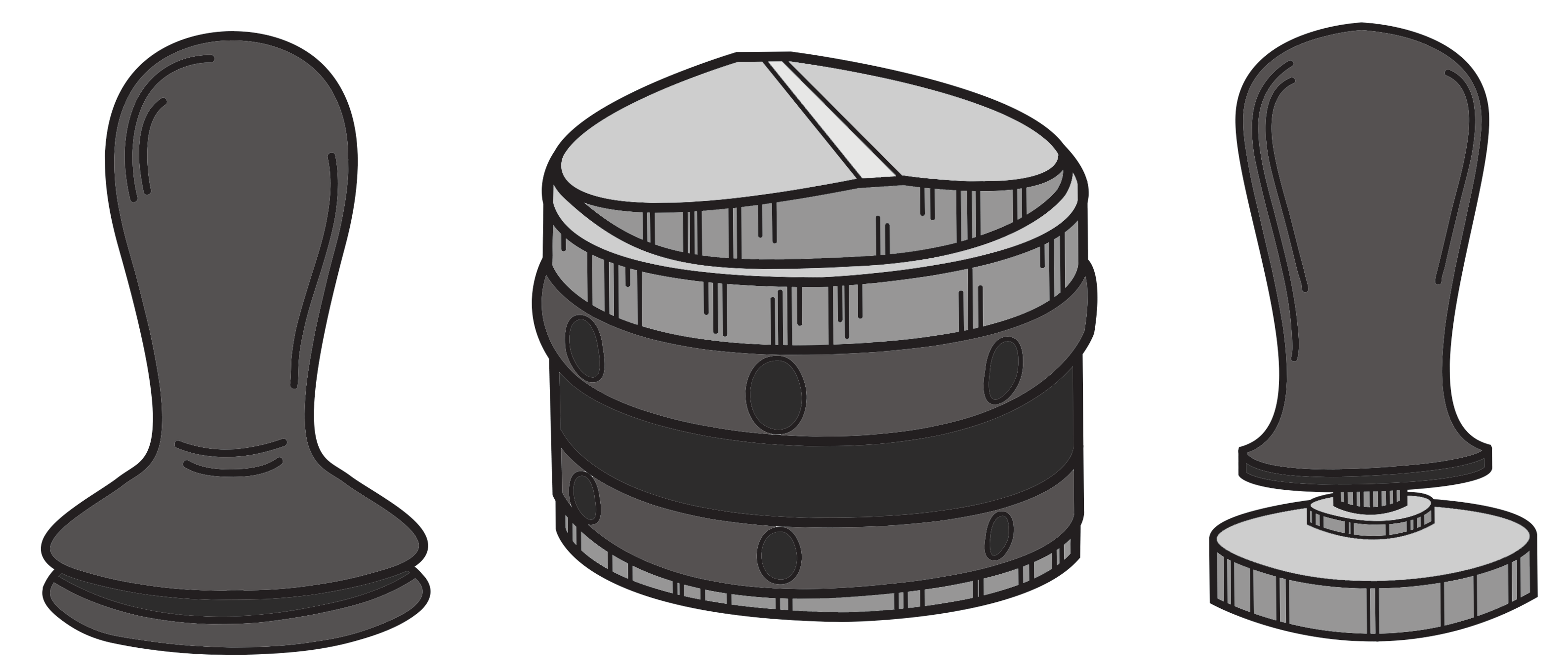Tamping
After achieving a homogeneous distribution, you need to tamp the coffee. A coffee tamper is designed to fit snugly inside a filter basket to allow a barista to press evenly on the coffee grinds to remove air pockets and to collapse clumps of grinds. The effect of tamping seals the dry grinds against the walls of the filter basket in such a way that even if you turned the portafilter upside down, the coffee wouldn’t fall out. Without this essential step, water will be more likely to travel unevenly around the coffee grinds, resulting in a weaker shot with less balance.
Your Choice of Tamper
The most effective tampers fit snugly in the filter basket. They are not so wide as to get lodged against the sides of the basket but not too loose-fitting either. A recommended maximum tamper diameter for the majority of filter baskets is 58.5 mm. The minimum tamper diameter is around 58.3 mm. A tamper with a diameter of 58.0 mm will get the job done, but the chances of water travelling down the side of the basket increase precipitously. A tamper with a 58.5-mm diameter will be compatible with the best filter basket designs.
Tamper bases should be flat-bottomed and should not have any visible edge radius (i.e., they should not have a rounded-off edge). Tamper bases must be looked after and must not be dropped, scratched, knocked against the portafilter, or scuffed on hard surfaces.
The Physics of Tamping
After you apply a small amount of downwards pressure to them, coffee grinds stop moving. Take a look at this video, where we demonstrate this concept with a simple experiment. In this video, we conduct an experiment ascertain the amount of compression of the coffee puck between a comfortable tamp pressure and a very heavy tamp. We found a difference of only 3% between the light and heavy tamp.
This is great news for consistency and ergonomics because:
1) There’s no maximum tamping pressure.
